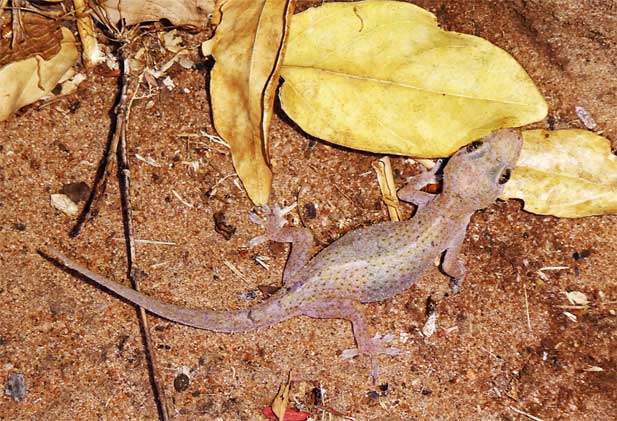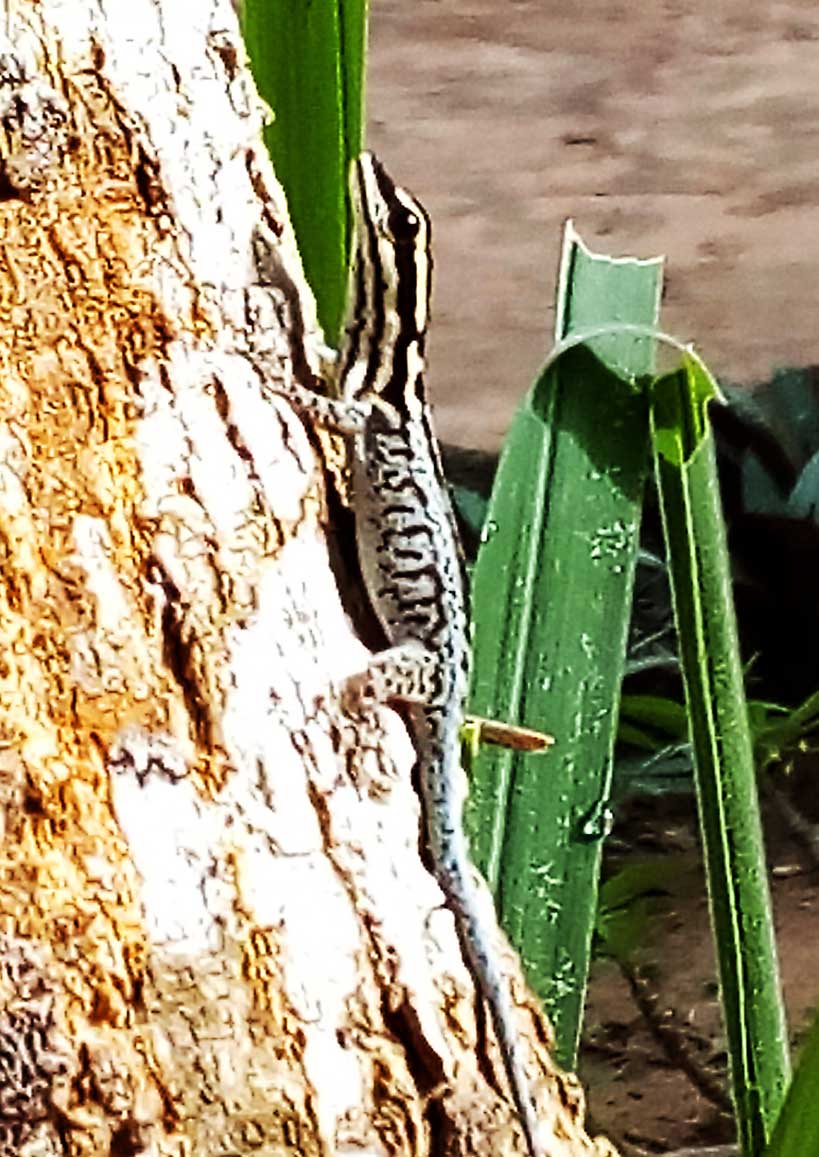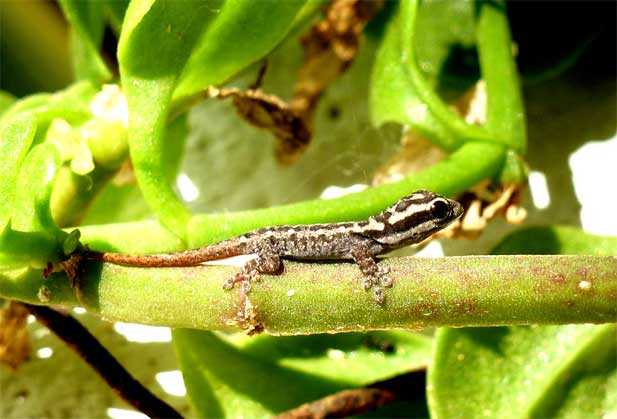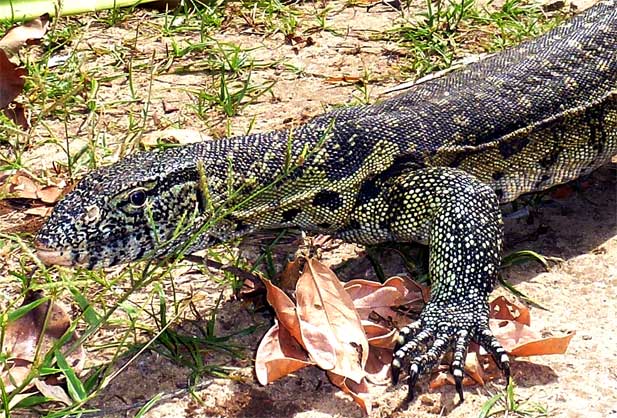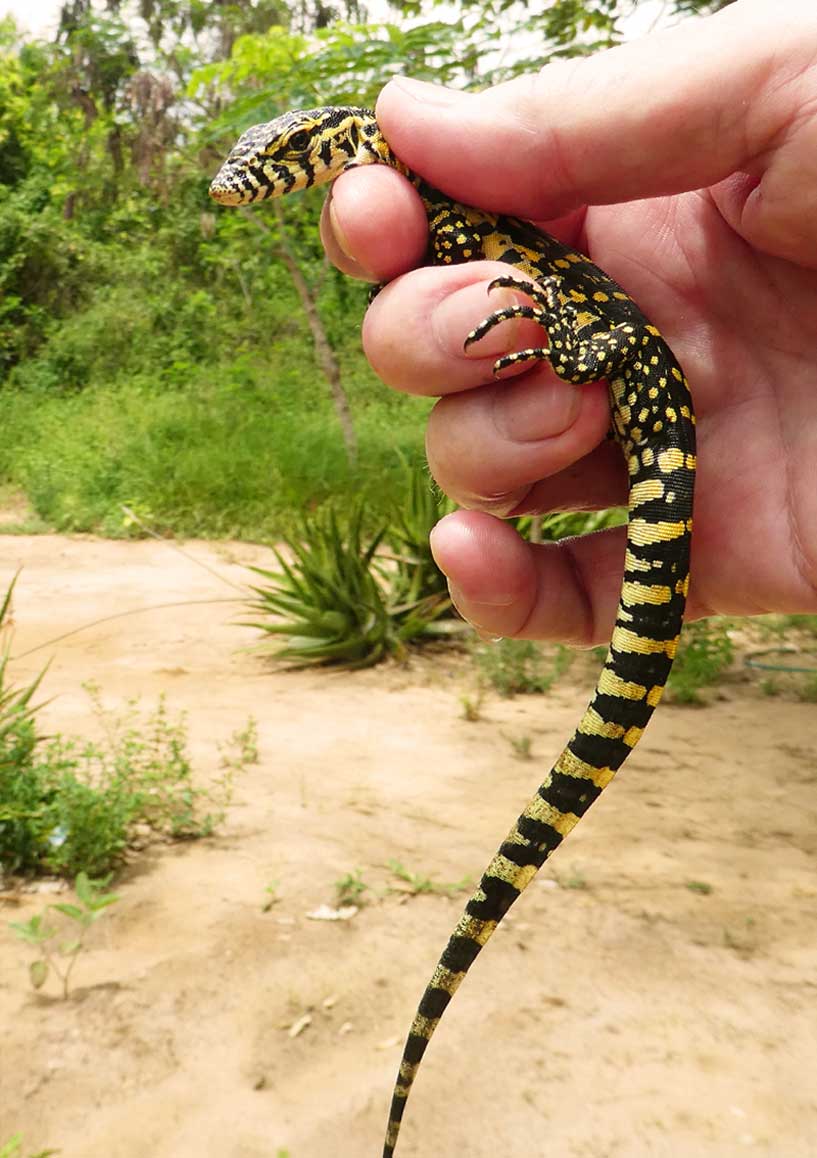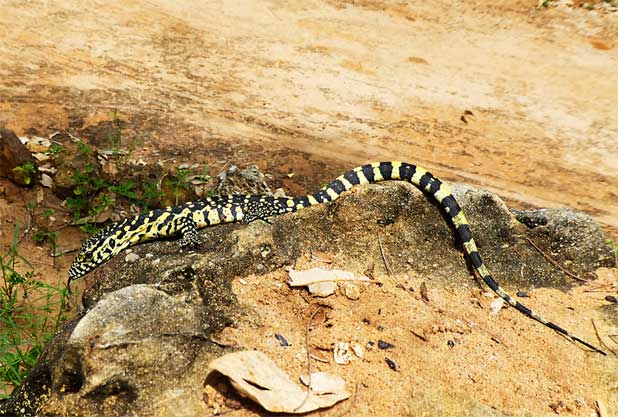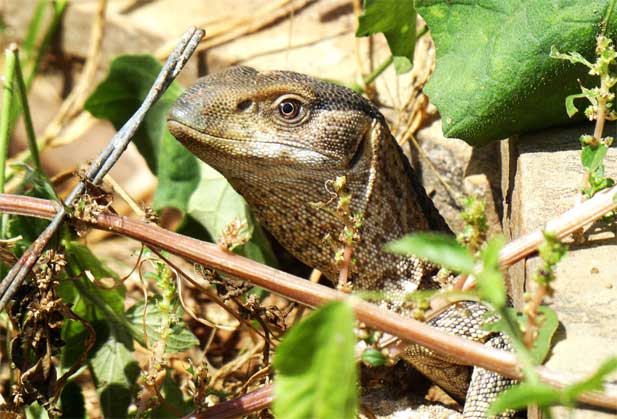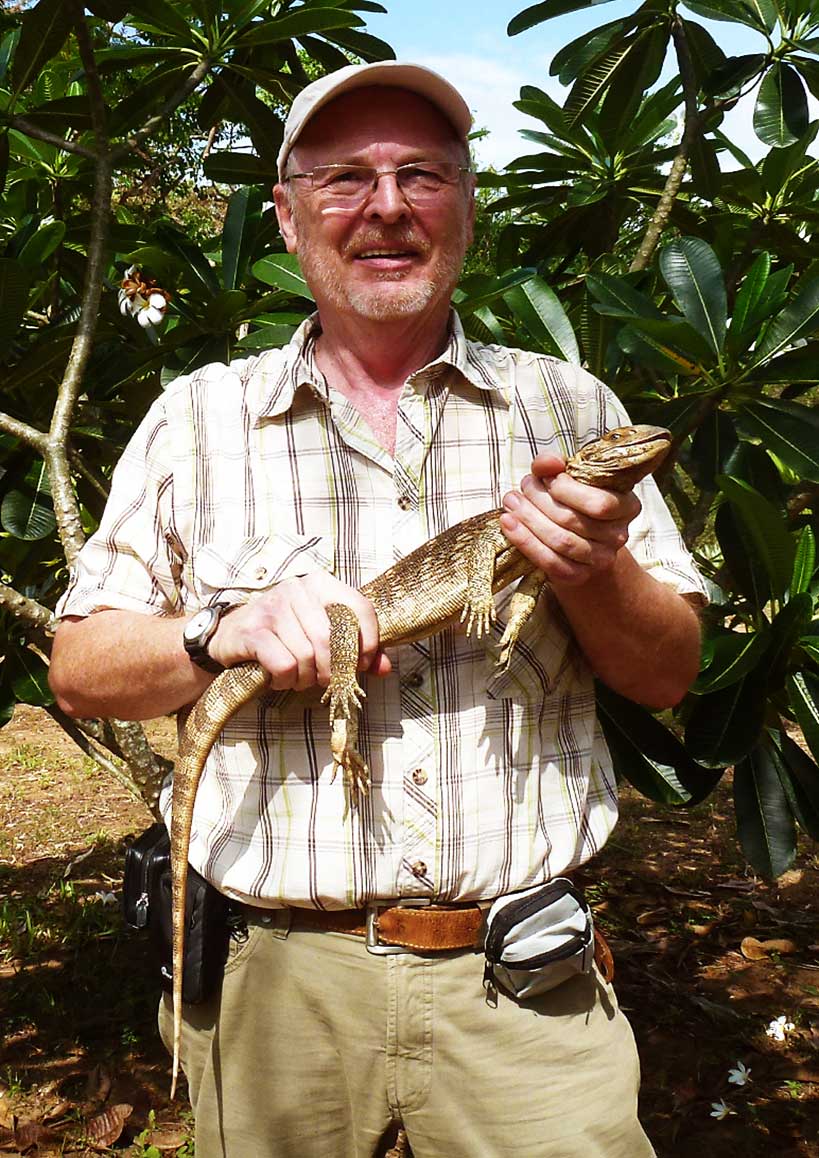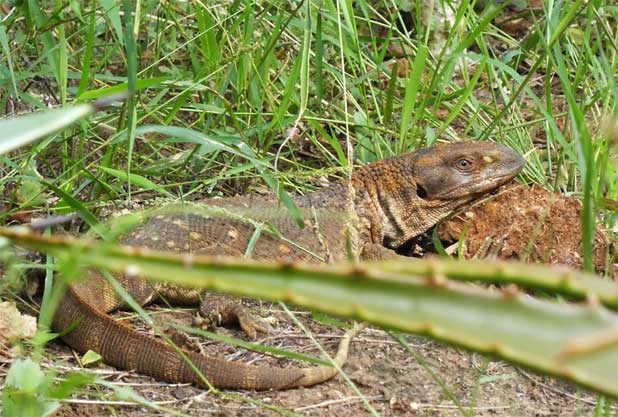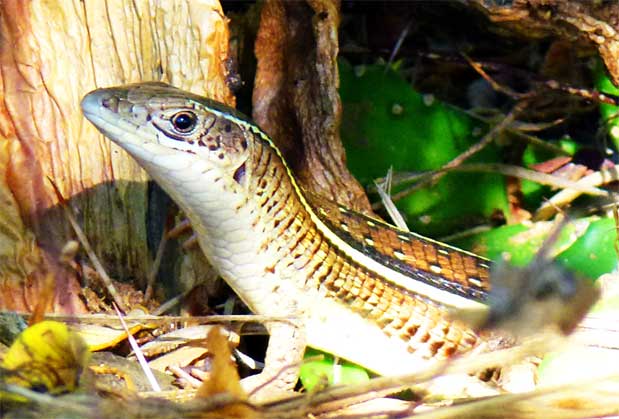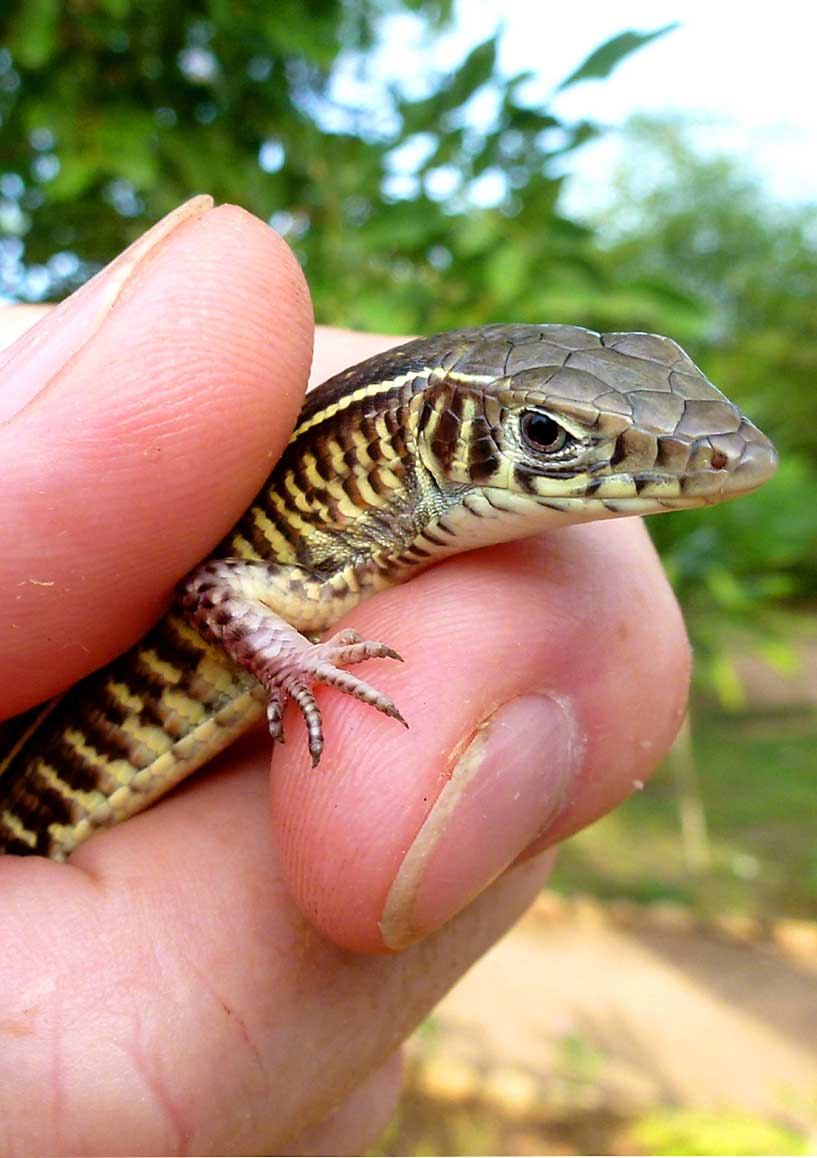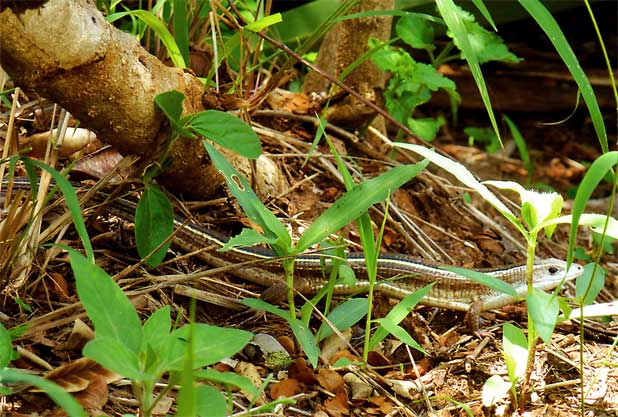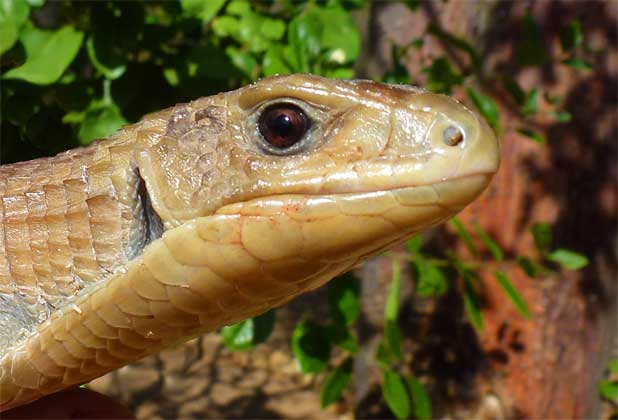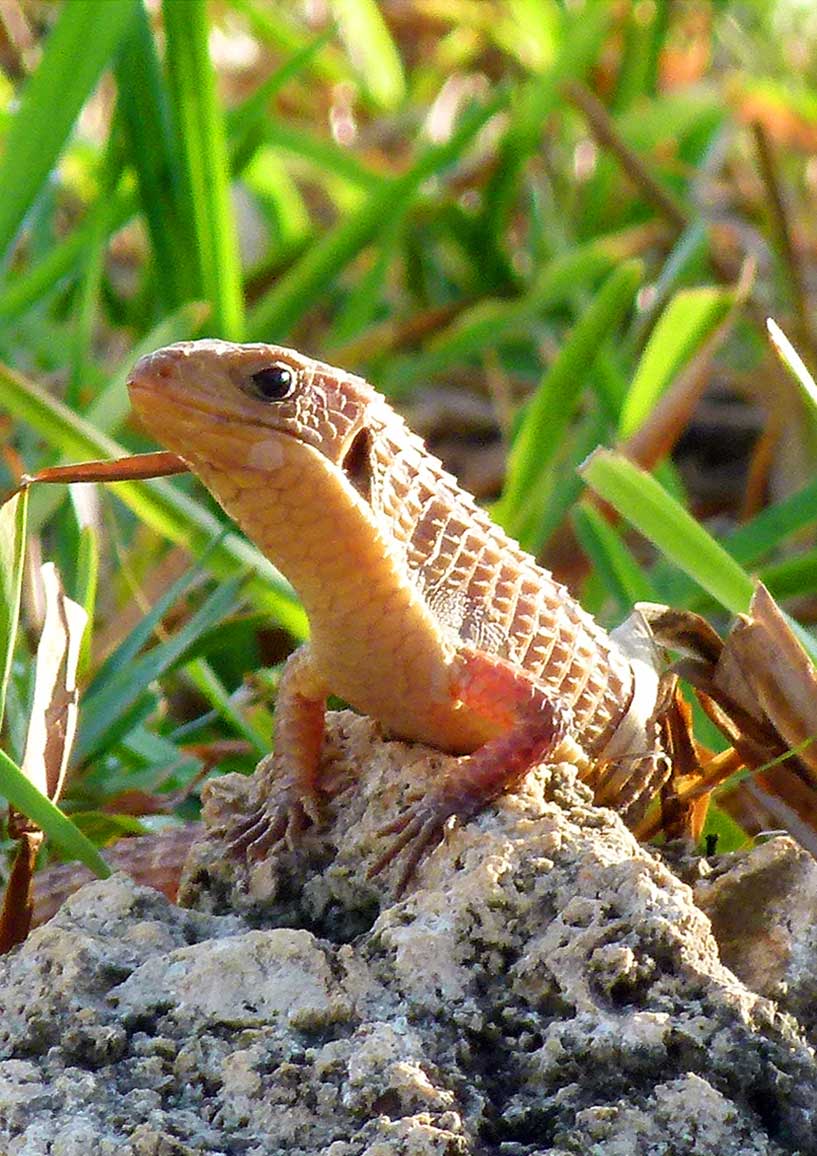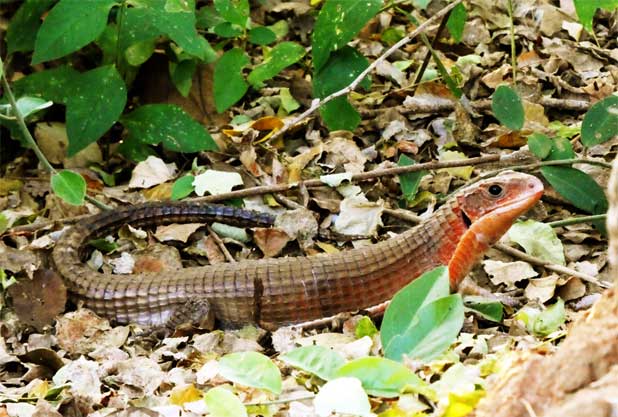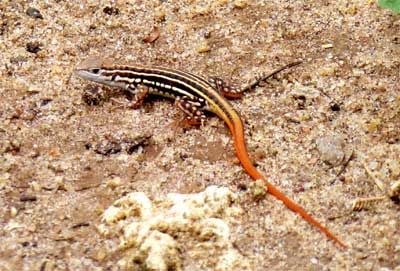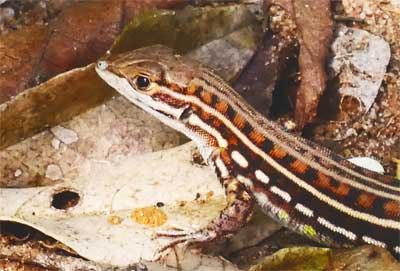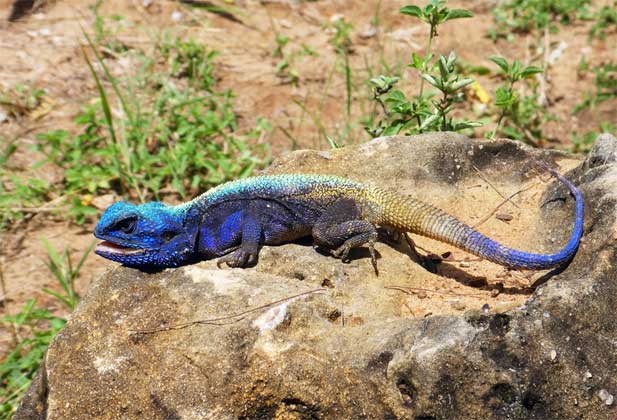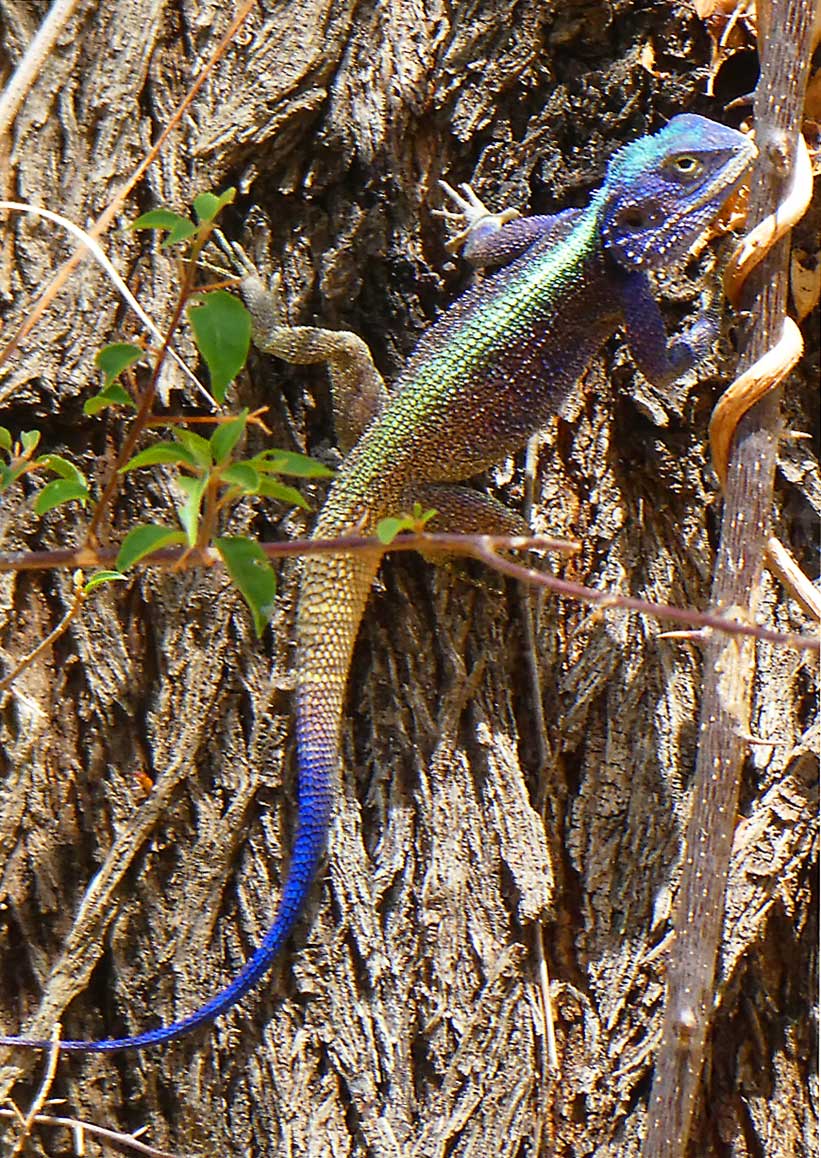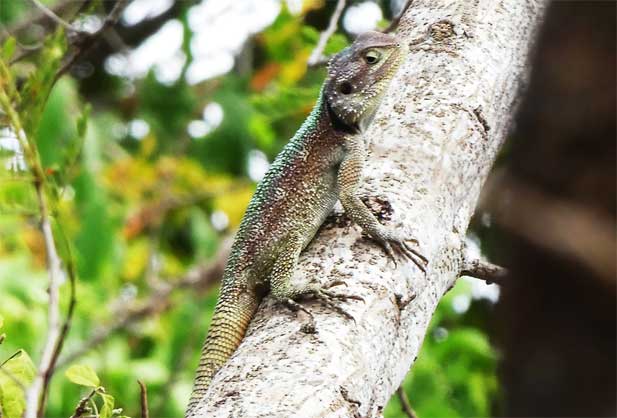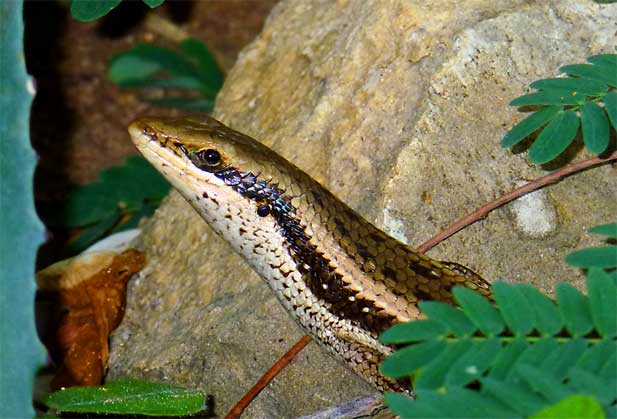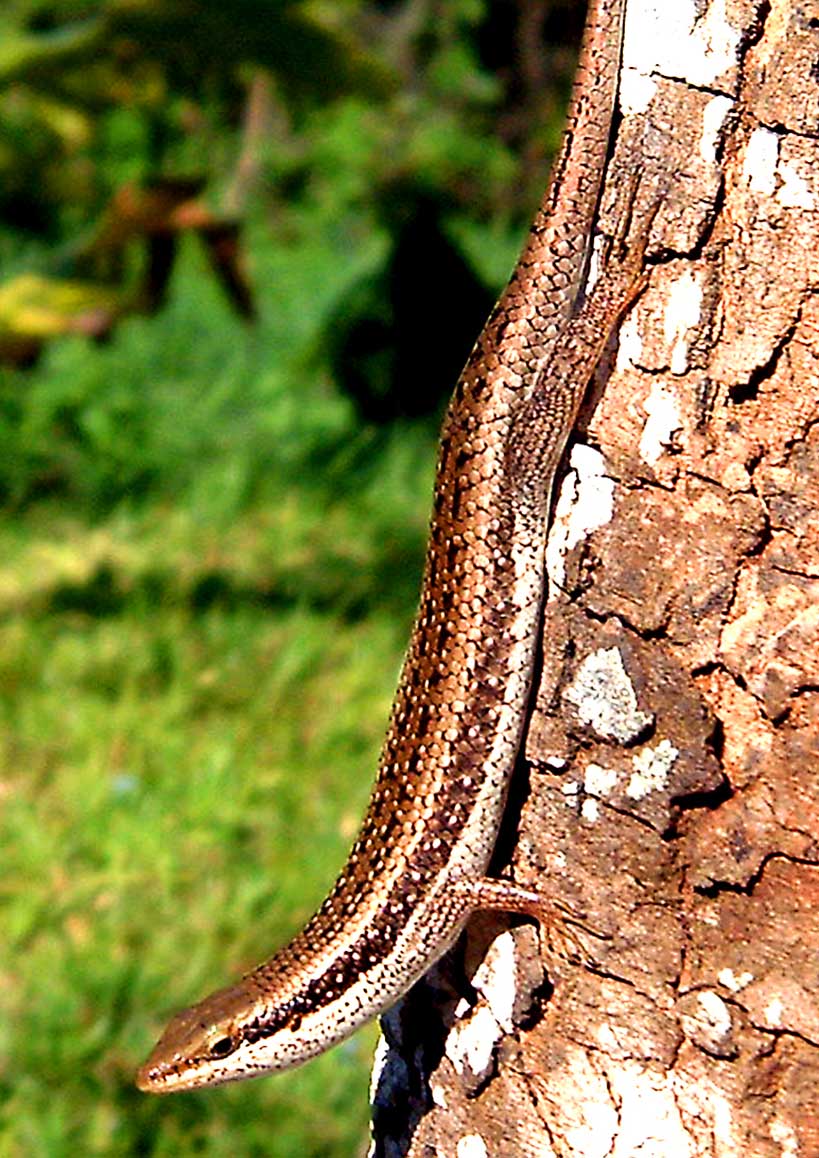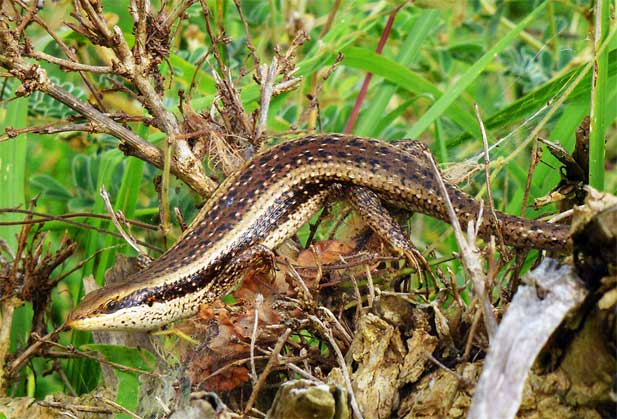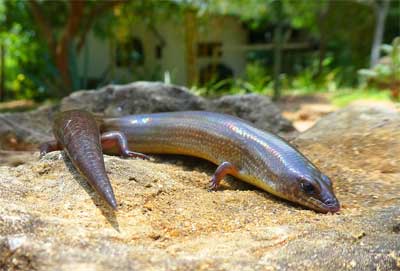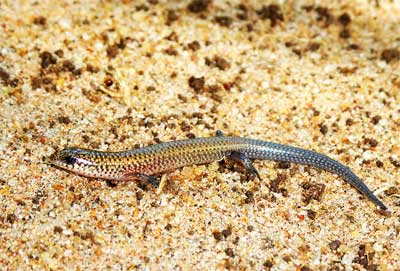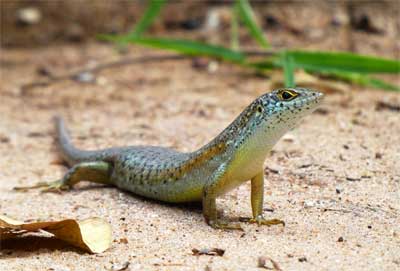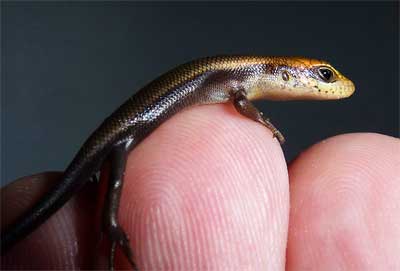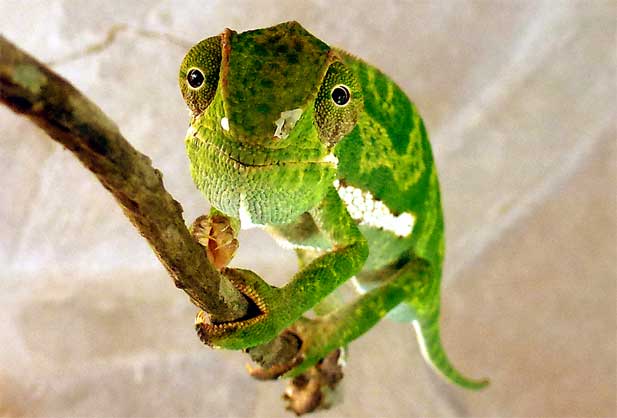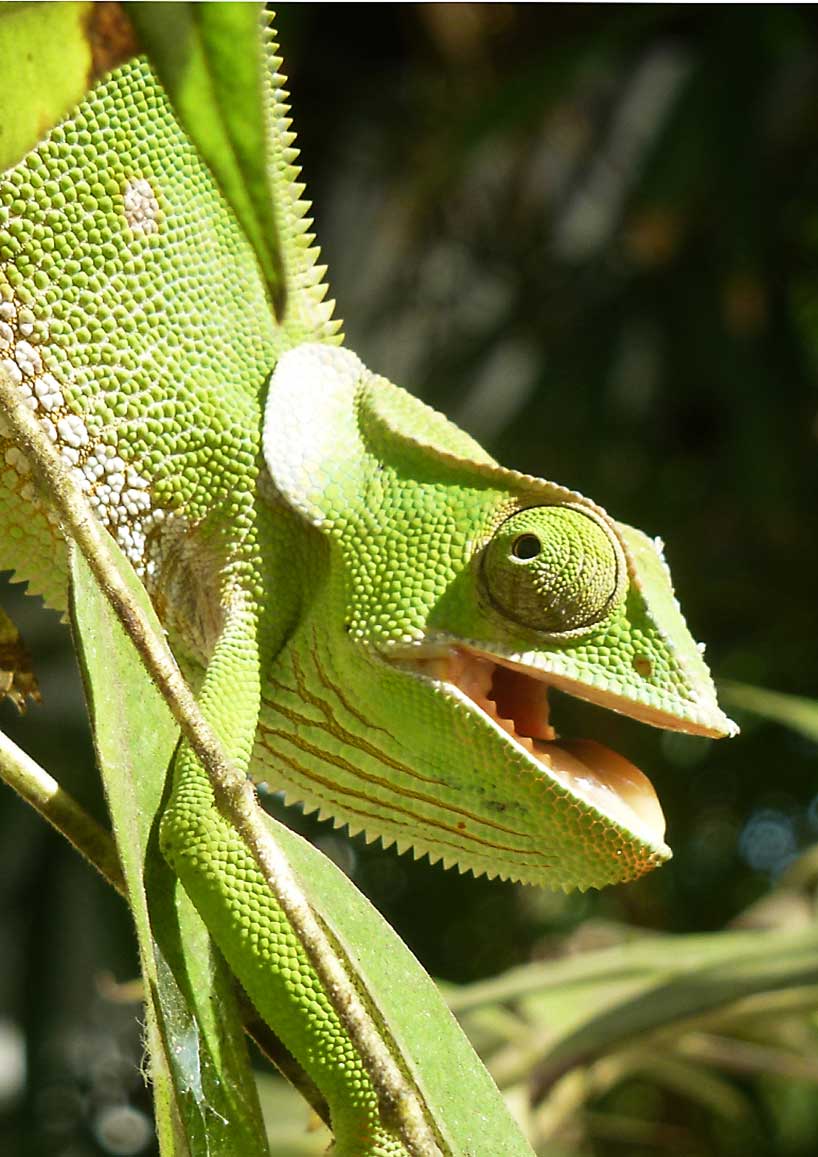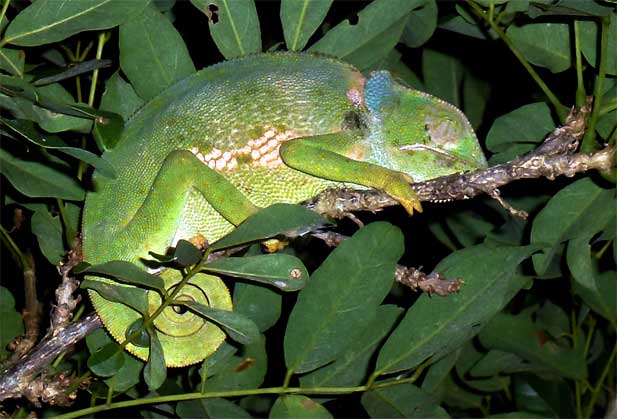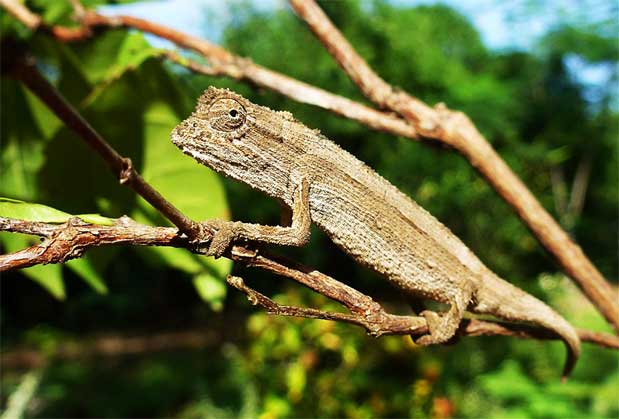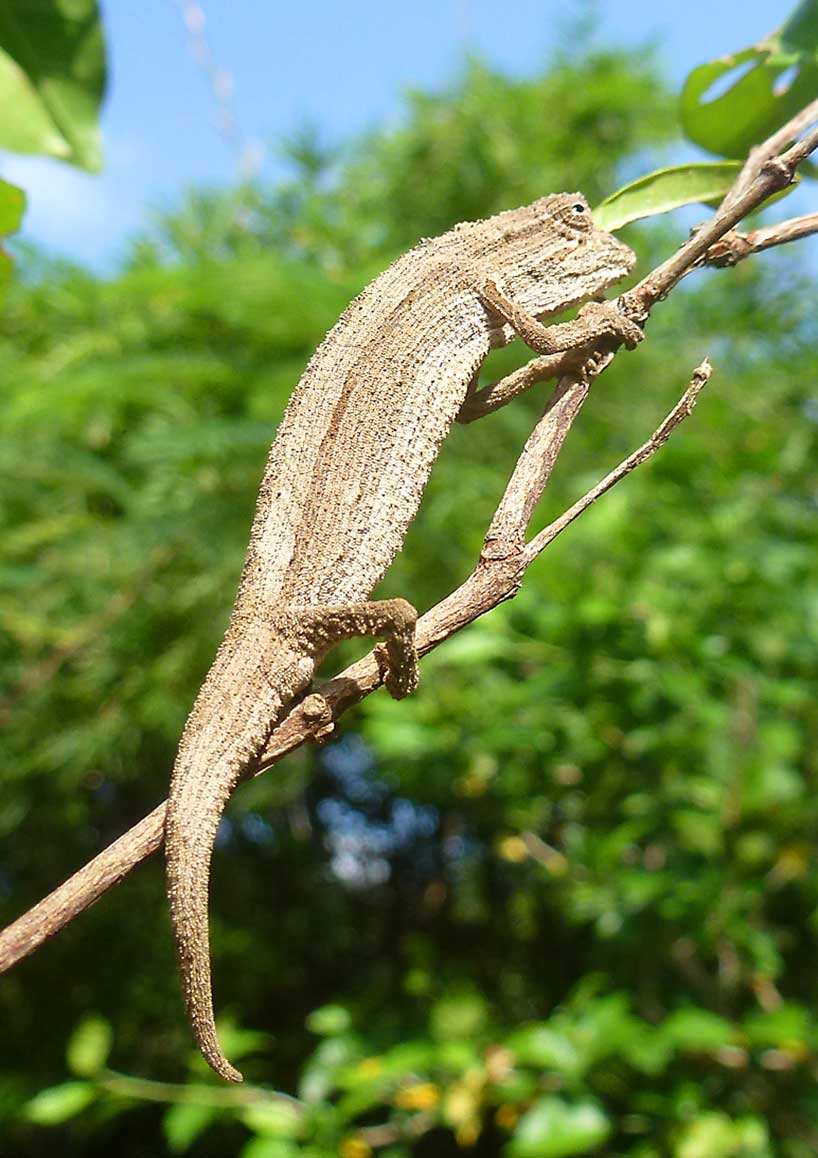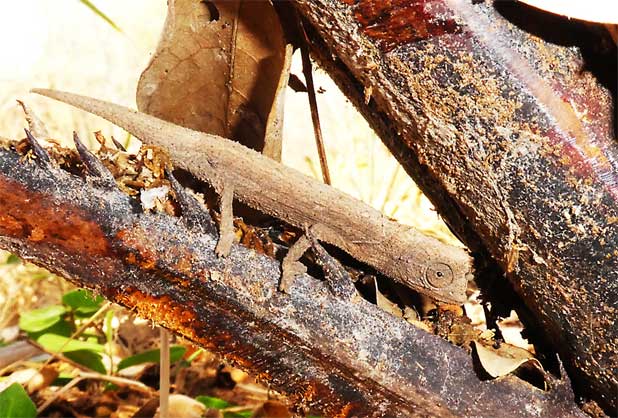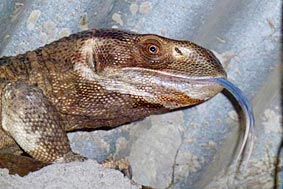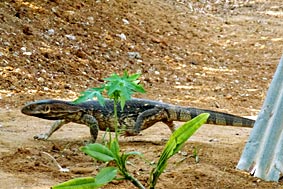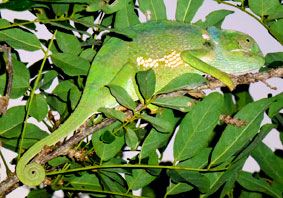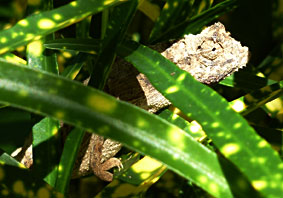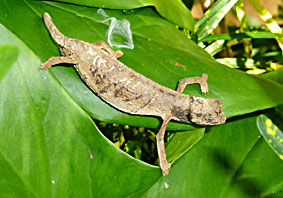| | ||||||||||||||||||||||||||||||||||||||||||||||||||||||||||||||||||||||
| Lizards By the way, all the animals that can be seen here, are free-living on the farm land, and are not kept in cages. | ||||||||||||||||||||||||||||||||||||||||||||||||||||||||||||||||||||||
| Geckos, Lizards, Agamas, Skinks and Chameleons
More
photos and information
| ||||||||||||||||||||||||||||||||||||||||||||||||||||||||||||||||||||||
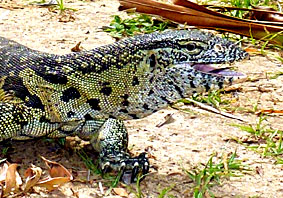 |
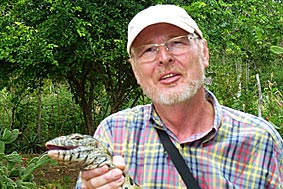 |
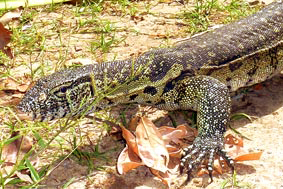 |
||||||||||||||||||||||||||||||||||||||||||||||||||||||||||||||||||||
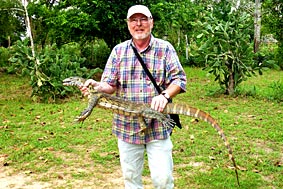 |
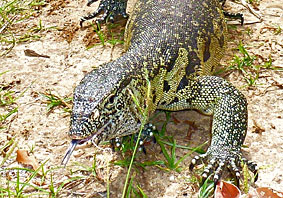 |
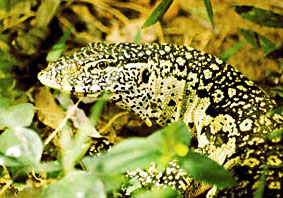 |
||||||||||||||||||||||||||||||||||||||||||||||||||||||||||||||||||||
Nile monitors are also at home with us, because Lake Chem Chem and Sabaki River are nearby. Male specimens roam up to 25,000 m² area with constantly water-bearing rivers, lakes or other water sources throughout the year. The females are confined to smaller areas. Their active phase of hunting is during rainy season, then they capture everything they can overpower. Food, They track down their food with help of her forked tongue, which they use as olfactory organ. So they can find even feeding victims underground. In dry season they usually lurk for their prey and devour also carrion. These diurnal animals enjoy sunbathing on termite mounds or other elevated surfaces. They can climb very well and are therefore also arborial. Nile monitors are very good swimmers and can remain under water more than twenty minutes. They are known as margin nest robbers. During breeding seasons of birds and crocodiles is for nile monitor a real paradise. A
Nile Monitor can grow up to 2 meters long.
More photos and information |
||||||||||||||||||||||||||||||||||||||||||||||||||||||||||||||||||||||
| ||||||||||||||||||||||||||||||||||||||||||||||||||||||||||||||||||||||
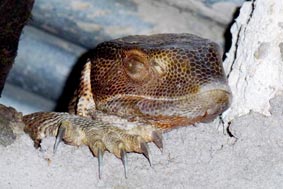 |
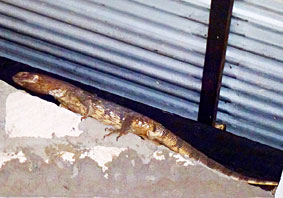 |
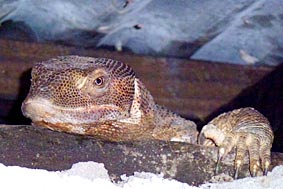 |
||||||||||||||||||||||||||||||||||||||||||||||||||||||||||||||||||||
|
|
|
|
||||||||||||||||||||||||||||||||||||||||||||||||||||||||||||||||||||
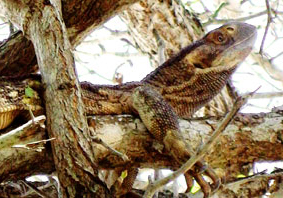 |
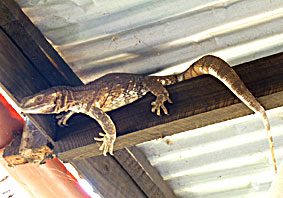 |
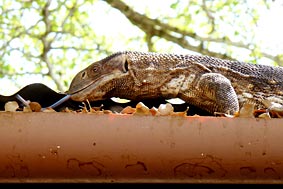 |
||||||||||||||||||||||||||||||||||||||||||||||||||||||||||||||||||||
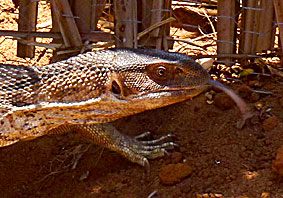 |
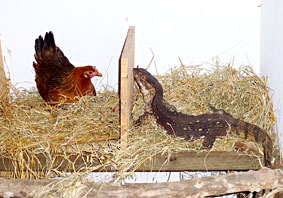 |
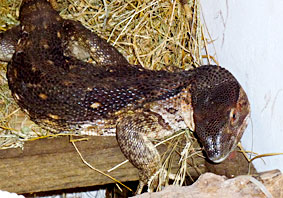 |
||||||||||||||||||||||||||||||||||||||||||||||||||||||||||||||||||||
| One evening I was sitting on the terrace and looked around. I noticed at an opening at the roof a shadow that I had never seen there before. In the spotlight of my torch I discovered the head of a large brown Savanna Monitor and the sharp claws of his right foreleg. The eyes were closed and he seemed asleep. Next morning he was no longer there. Later I found him in the roof rafters, where he had made himmselve comfortable on a crossbeam. He walked slowly back and forth and looked bored down on us. A few days later I served him water, fresh meat and raw eggs in the rafters. After two weeks he probably had enough rafters holiday and walked across the gutter on the nearby tree in the front yard. He lay there for about 2 hours on a thick branch in the sun, climbed down and disappeared into the nearby undergrowth. He is normally a diurnal ground dwellers, but it can be found on trees and rocks at dizzying heights. Its prey consists of all he can overwhelm, even snakes and turtles. As the Nile Monitors with its blue forked tongue also Savanna Monitors can detect underground nests and then dig with its massive claws eggs or live prey. Savannah monitors can reach a length of 140 centimeters. My tenant was 115 centimeters, but I still had great respect for him. He has often visited my henhouse, but the chickens are not going harmed. The poultry has defended themself successfully against him with its beak. However, I have caught him then and released him to the forest. On the very same day he came twice into the hen house and I caught him every time to remove. Perhaps
it has even made fun to him because he still visits us regularly.
| ||||||||||||||||||||||||||||||||||||||||||||||||||||||||||||||||||||||
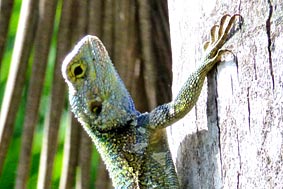 |
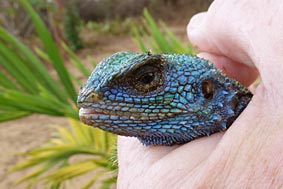 |
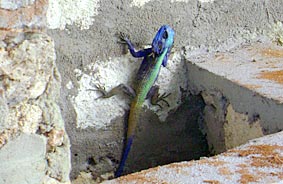 |
||||||||||||||||||||||||||||||||||||||||||||||||||||||||||||||||||||
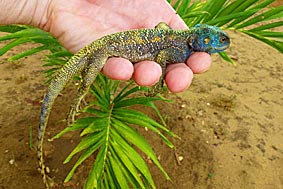 |
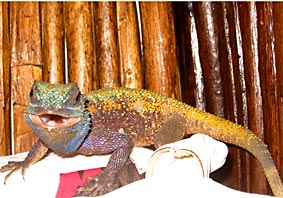 |
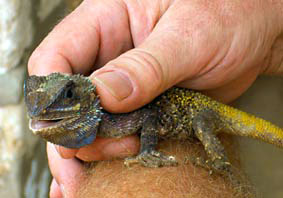 |
||||||||||||||||||||||||||||||||||||||||||||||||||||||||||||||||||||
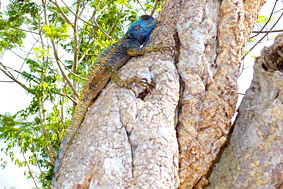 |
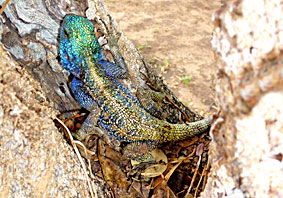 |
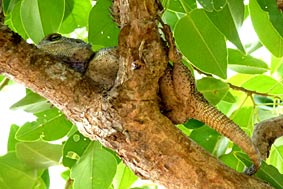 |
||||||||||||||||||||||||||||||||||||||||||||||||||||||||||||||||||||
| Marlies one day wanted to get something out of the room. Just this Blue head Tree Agama sat on a shelf in the guest room and snapped to the "intruder". With lightning-fast hand movement Günther had seized the Agama. However, it was very defensive until Guenther released the lizard on a tree. There it calmed down and looked down satisfied. Another time I was called to a Blue-headed tree agama that lay lifeless in the driveway. At first we thought the reptile was dead. It was still early morning, this area was still in the shade and the temperatures were below 24° C degrees rather cool for African conditions. I picked up the motionless body and put him in a tree that was touched by the first beams of sunshine. After about 15 minutes our little blue-headed friend slowly climbed higher and hid in the forest canopy. Blue
headed tree agamas are nearly 40 centimeters long. Incidentally, in
the highlands of East Africa, it is believed that these colorful agama
is toxic. | ||||||||||||||||||||||||||||||||||||||||||||||||||||||||||||||||||||||
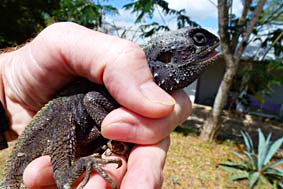 |
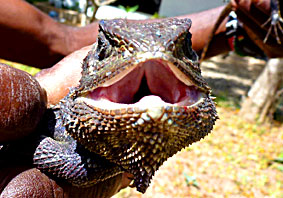 |
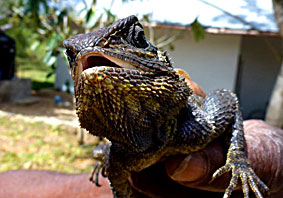 |
||||||||||||||||||||||||||||||||||||||||||||||||||||||||||||||||||||
| When
these powerful animals are well warmed up, they resist violently and
show her open pink to orange mouth, which allows them to bite firmly.
Tree agamas are diurnal and arboreal and can be seen quite often in human settlements. If you come too close to them, they just climb on higher branches. They often disappear quickly behind a tree trunk and peeping out with one curious eye. Sometimes you see tree agama also on rock and termite mounds. Although they eat a variety of beetles and other insects, their favorite dish is from ants. Tree agama sleep at night on branches and hollow bark. Chameleons
are the closest relatives of these lizards. About the exact nature of
the relationship and how closely they are related, is still discussed
in scientific circles.
|
||||||||||||||||||||||||||||||||||||||||||||||||||||||||||||||||||||||
| ||||||||||||||||||||||||||||||||||||||||||||||||||||||||||||||||||||||
|
|
|
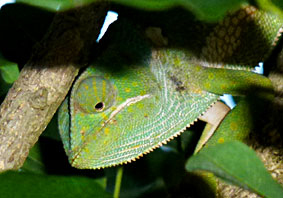 |
||||||||||||||||||||||||||||||||||||||||||||||||||||||||||||||||||||
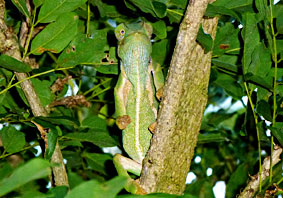 |
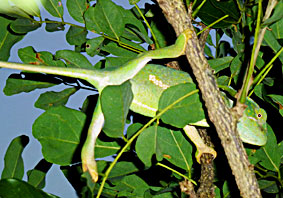 |
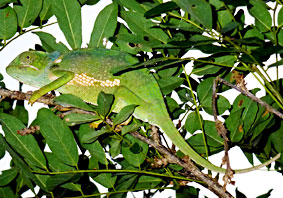 |
||||||||||||||||||||||||||||||||||||||||||||||||||||||||||||||||||||
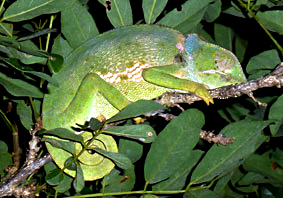 |
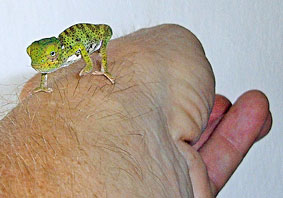 |
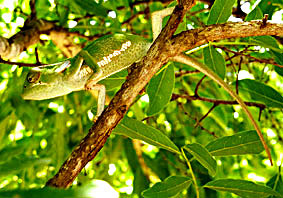 |
||||||||||||||||||||||||||||||||||||||||||||||||||||||||||||||||||||
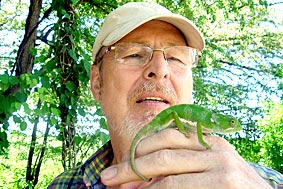 |
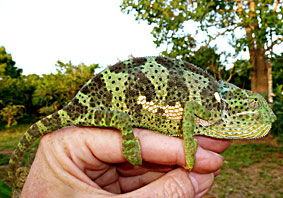 |
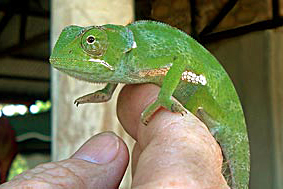 |
||||||||||||||||||||||||||||||||||||||||||||||||||||||||||||||||||||
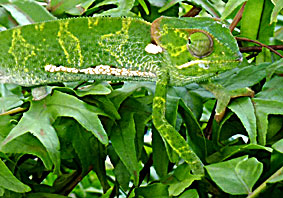 |
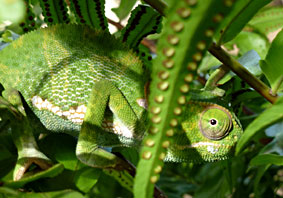 |
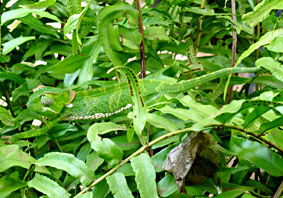 |
||||||||||||||||||||||||||||||||||||||||||||||||||||||||||||||||||||
The ability to change color, made chameleons so famous. The interplay of colors depends on the emotional and hormonal status. But usually corresponds to the respective background, which they can adapt quickly. Iin East Africa only there are 40 different species. Chameleons are very difficult to detect in the bushes and trees. They live from sea level in moist coastal forests and thickets and in dry savannah up to almost 1800 meters. To these unique animals entwine also plenty of tales. An amusing story, when put chameleons on a tartan rug, they will explode of frustration. Hahaha. Unfortunately the other stories deal mostly of misfortune, which is taken very seriously by Africans. The whole body and body parts of the chameleons are also used in witchcraft apply. That's why africans don't accept chameleons in the area of their homes. The life of a chameleon takes place primarily on shrubs and trees, but occasionally on the ground. Is also observed frequently during the rainy season in the morning when crossing streets. As a diurnal animal it sleeps at night on the outer branches of bushes and trees. Their eyes are in conical turrets and move independently. Their eyesight is very sharp and looks like a pair of binoculars. But they can not hear well. They are not able to drop its tail like many other lizards. Intergrown with opposing toes with sharp claws chameleons are perfectly adapted for climbing. The larger species are found high up in trees and bushes. Their prey consists mostly of insects, small centipedes and spiders that shoot them literally with their sticky telescoping tongue. Here we see the Flap-necked Chameleon with its distinctive ear lobes. A hatched chameleon is about 4 centimeters and can grow up to 40 centimeters long. If
chameleons threatened and can not flee, they hiss and bite freqently.
It is amazing
how fast this slow reptiles can move.
| ||||||||||||||||||||||||||||||||||||||||||||||||||||||||||||||||||||||
|
||||||||||||||||||||||||||||||||||||||||||||||||||||||||||||||||||||||
|
|
|
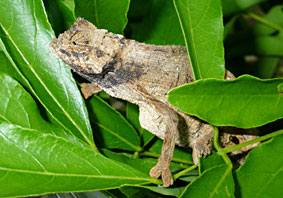 |
||||||||||||||||||||||||||||||||||||||||||||||||||||||||||||||||||||
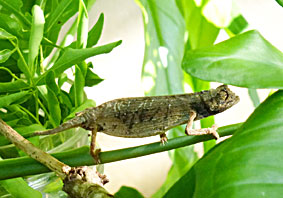 |
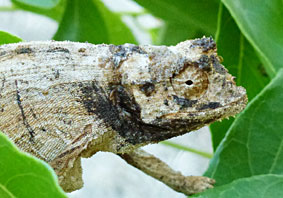 |
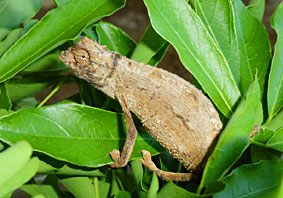 |
||||||||||||||||||||||||||||||||||||||||||||||||||||||||||||||||||||
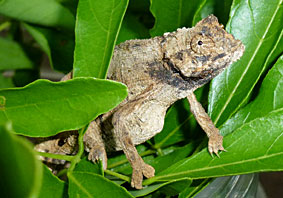 |
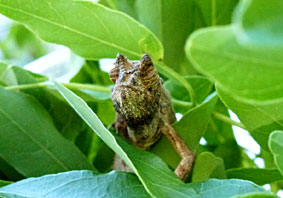 |
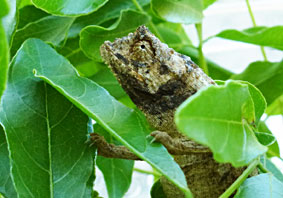 |
||||||||||||||||||||||||||||||||||||||||||||||||||||||||||||||||||||
The only 6 to 8 centimeters wide dwarf chameleon lives in the coastal forests as well as in the grasslands and semi-deserts. It seeks its food mainly on the ground, though there to sleep then climbs into the bushes. When hold in hands, it starts to vibrate and you might think to get a mild electric shock. It lives in the Tsavo area as dusk active chameleon but at the coast it shows throughout the day. His hiding places are holes and termite mounds. In open country and also in leafless thorn bushes, it can be impossible to be seen because of its camouflage. In
all these years I have seen 2 copies only.
| ||||||||||||||||||||||||||||||||||||||||||||||||||||||||||||||||||||||
| ||||||||||||||||||||||||||||||||||||||||||||||||||||||||||||||||||||||
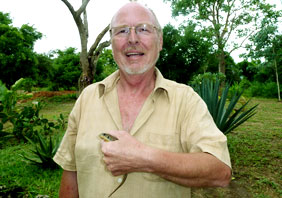 |
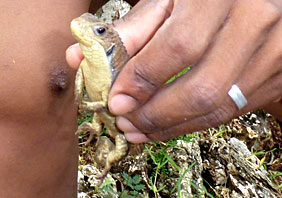 |
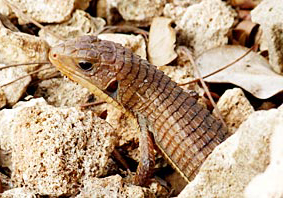 |
||||||||||||||||||||||||||||||||||||||||||||||||||||||||||||||||||||
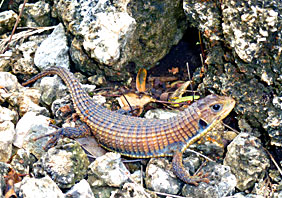 |
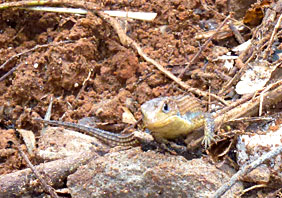 |
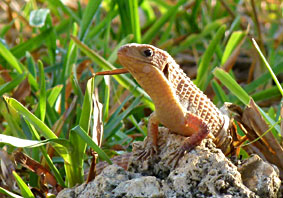 |
||||||||||||||||||||||||||||||||||||||||||||||||||||||||||||||||||||
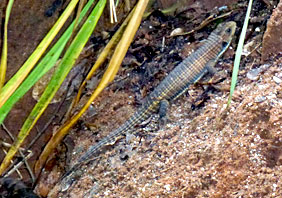 |
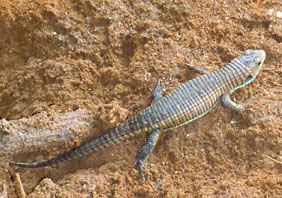 |
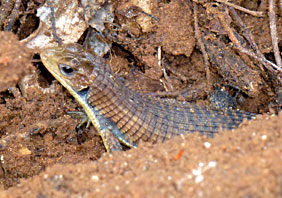 |
||||||||||||||||||||||||||||||||||||||||||||||||||||||||||||||||||||
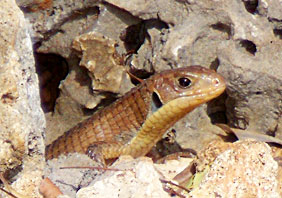 |
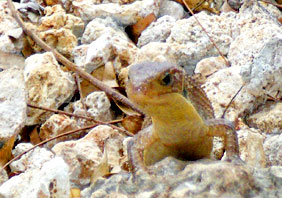 |
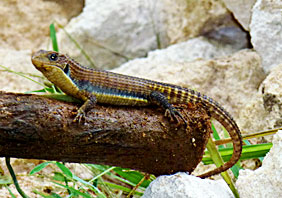 |
||||||||||||||||||||||||||||||||||||||||||||||||||||||||||||||||||||
 |
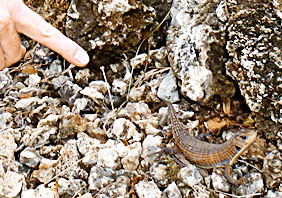 |
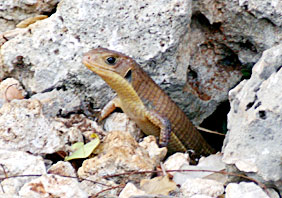 |
||||||||||||||||||||||||||||||||||||||||||||||||||||||||||||||||||||
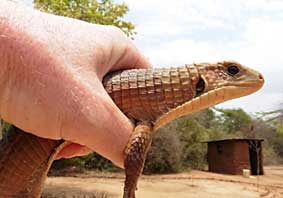 |
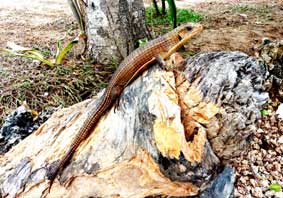 |
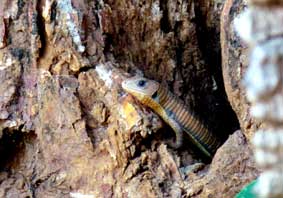 |
||||||||||||||||||||||||||||||||||||||||||||||||||||||||||||||||||||
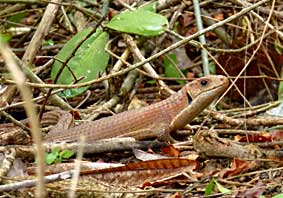 |
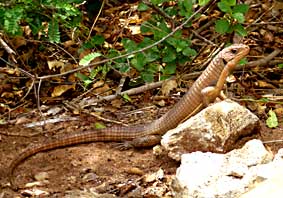 |
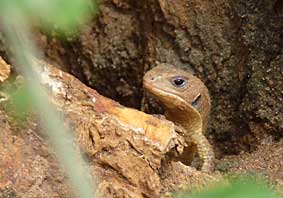 |
||||||||||||||||||||||||||||||||||||||||||||||||||||||||||||||||||||
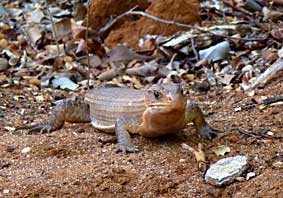 |
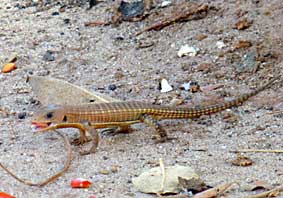 |
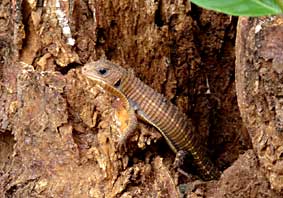 |
||||||||||||||||||||||||||||||||||||||||||||||||||||||||||||||||||||
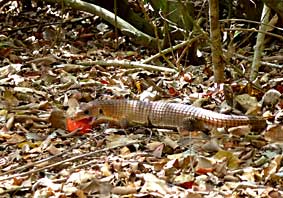 |
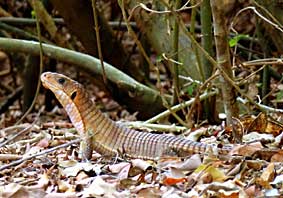 |
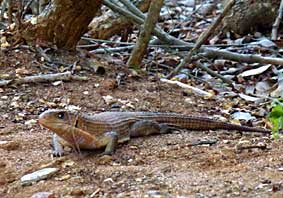 |
||||||||||||||||||||||||||||||||||||||||||||||||||||||||||||||||||||
| With strong short legs moves this large lizard through the African landscape. They occur in the moist thickets of coastal forests as well as in the dry savannah to almost 1700 meters. They can grow up to 50 centimeters lenght. They are found preferably in rocky crevices and rock piles but also in abandoned termite mounds. They can adapt very well to human settlements and even tame. As omnivores, they eat insects, fruits, flowers and even other small lizards. Even here at the garden demarcation are various caves and holes inhabited by happy Great plated Lizards. It is always a pleasure to see these lively fellows. | ||||||||||||||||||||||||||||||||||||||||||||||||||||||||||||||||||||||
|
||||||||||||||||||||||||||||||||||||||||||||||||||||||||||||||||||||||
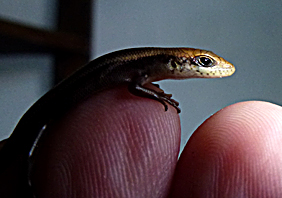 | 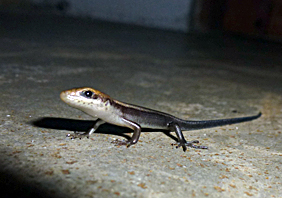 |  | ||||||||||||||||||||||||||||||||||||||||||||||||||||||||||||||||||||
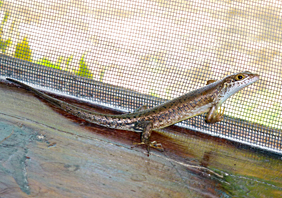 | 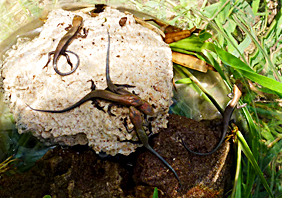 | 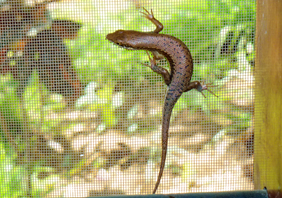 | ||||||||||||||||||||||||||||||||||||||||||||||||||||||||||||||||||||
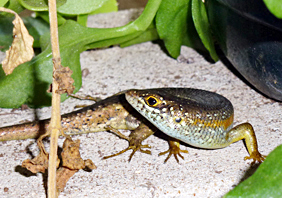 | 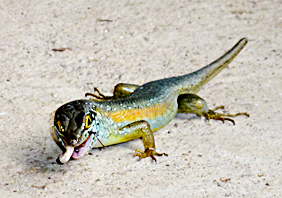 | 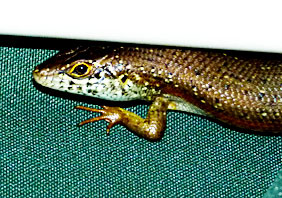 | ||||||||||||||||||||||||||||||||||||||||||||||||||||||||||||||||||||
| They
are actually arboreal. But it seems that these up to 25 centimeters
comrades feel very comfortable here at our house. They are not afraid
to take expeditions through all the rooms and often sit on the window
sill. They even lay eggs inside the house.
One morning in the bathroom I discovered 8 tiny lizards. They were not shy and were just like that on the floor. I almost stepped on it. I immediately hung a sign on the door: "Do not step on small Lizard Babies". After about 3 weeks, I have never seen them in ther bathroom again. But later I saw them outside. These skinks live at the coast area and also in the highlands. They can vary regionally in design and color. They
feed on insects, arthropods and worms.
| ||||||||||||||||||||||||||||||||||||||||||||||||||||||||||||||||||||||
|
||||||||||||||||||||||||||||||||||||||||||||||||||||||||||||||||||||||
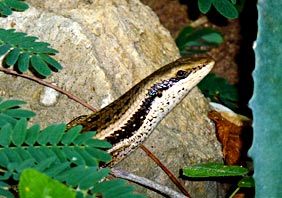
| 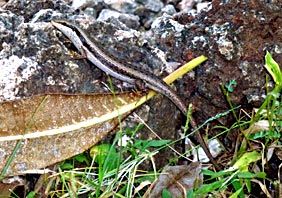
| 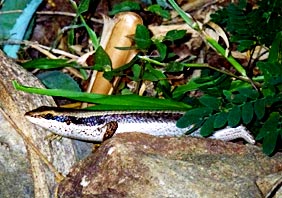 | ||||||||||||||||||||||||||||||||||||||||||||||||||||||||||||||||||||
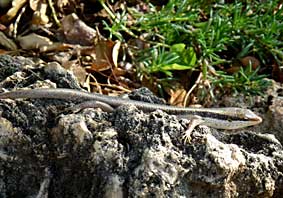 | 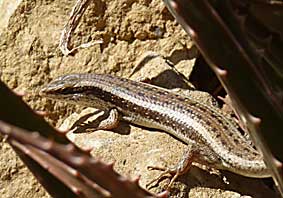 | 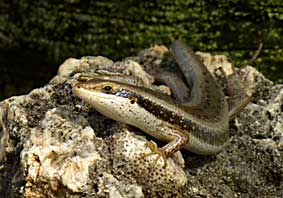 | ||||||||||||||||||||||||||||||||||||||||||||||||||||||||||||||||||||
These diurnal skinks I have never seen in the house. They are very shy compared to those in house. They live in the garden and they are quite tolerant of urbanisation. As ground dwellers they also like to be in rugged country as rocky hills and ridges. There they hide under stones but also under bark. They are very fast moving. In some areas it has been observed that they give live birth to 3-10 babies. Also there are place where they lay up to 12 eggs which hatch after 2 months. The food consists of insects and other arthropods. | ||||||||||||||||||||||||||||||||||||||||||||||||||||||||||||||||||||||
|
||||||||||||||||||||||||||||||||||||||||||||||||||||||||||||||||||||||
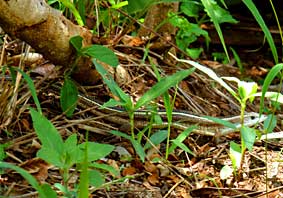 |
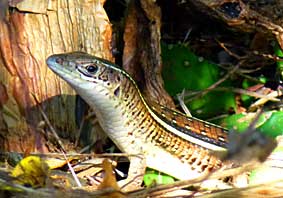 |
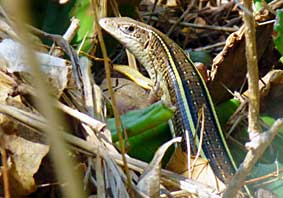 |
||||||||||||||||||||||||||||||||||||||||||||||||||||||||||||||||||||
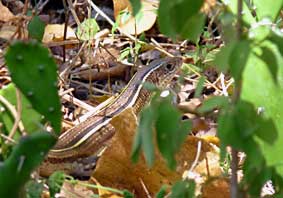 |
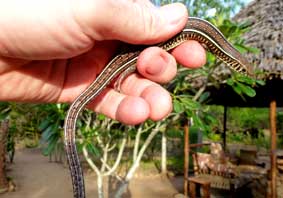 |
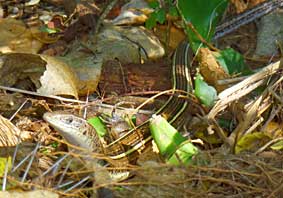 |
||||||||||||||||||||||||||||||||||||||||||||||||||||||||||||||||||||
|
These lizards, up to 65 cm long, are very shy and despite their size rarely seen. However, I had a few times luck to get these attractive lizards to face and could even catch a young animal. They are well armored with hard body plates and head shields. The tail is almost two-thirds of the whole body. They are day active and dig their habitats mostly in loose soil. These lizards mainly hunt insects, and when they are in danger, they flit quickly into their subterranean dwellings, preferably under bushes. |
||||||||||||||||||||||||||||||||||||||||||||||||||||||||||||||||||||||
Back
to |
Home |
